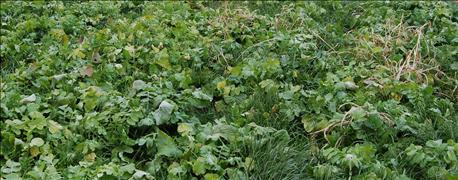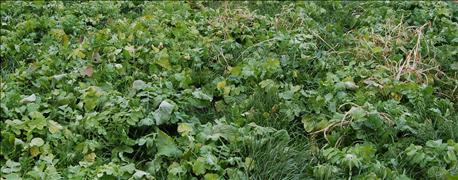
The opportunity to build soil health pumps most people up. Then you hear a tale about an absentee landowner generations removed from the farm who only cares about dollar signs. This person accepts an over-the-top cash-rent bid without considering how the new tenant will take care of the land. In at least one case, a new tenant intends to turn under years of continuous no-till with a moldboard plow.

PROTECT THE SOIL: If you’re in it for the long haul as a landowner, having your fields look like this may be more important than the few extra bucks you might get from using conventional tillage.
That’s why it’s time for landowners to address what they have at stake, and for them to understand soil health, Don Donovan says. He’s a district conservationist with the Natural Resources Conservation Service, and one of the people who prepares information for this Salute Soil Health column.
The Indiana Conservation Partnership personnel and other partners besides Donovan who contribute to this information include Clint Harrison, Brian Musser and Ruth Hackman, district conservationists; Susannah Hinds, grazing specialist; Scot Haley, resource soil scientist; Kris Vance, public affairs specialist; Victor Shelton, state agronomist/grazing specialist; Tony Bailey, state conservation agronomist; and Shannon Zezula, state resource conservationist.
Set your priorities
What is the most important point of discussion when you talk about your farm with your tenant each year? Donovan asks. Are you tempted to change tenants when offered a few more dollars of cash rent, like the landowner in the example above?
Or do you discuss how your land will be farmed? What conditions do you require in your cash rent contract, or better yet, do you have a contract? Do you review soil test results to ensure that nutrients are staying at acceptable levels? Do you care what kind of tillage your tenant uses on your farm? Do you know how tillage can impact the productivity potential of your farm?
Donovan continues, when you take a drive around your farm, what do you see? Do you see a field that has been fall-tilled with very little crop residue left to protect the soil surface? Do you see gullies that have formed after heavy rains in fields that have no armor to protect them? Do you see large areas of water standing because tillage has caused compaction or lack of soil structure that reduces the soil’s ability to let water infiltrate?
Or do you see something totally different? Donovan works with many landowners whose tenants make sure their fields are covered with undisturbed residue from last year’s harvest. Grass waterways and field borders have been installed to control runoff. Many of their fields are a green carpet of fall-planted cover crops that protect the soil, collect unused nutrients and feed the microbiology below the surface.
You decide
Donovan suggests thinking about what you as the owner of the farm can do to improve the soil. Here is a five-point checklist that's a good place to start.
1. Remember, you are the owner — it’s your land. You have the right to suggest changes, and you have the right to request changes, Donovan says.
2. You may have to compromise with your tenant. Changes may mean you agree to a lower cash-rent payment while change is being implemented. This could be a change in tillage from conventional to no-till, perhaps with cover crops.
3. You may have to return part of your cash-rent payment to the farm. Investing in drainage, lime and cover crops will provide a return on your investment, improve productivity, and make your farm more valuable for farming.
4. If you want cover crops, pony up on costs. If you want cover crops growing on your farm throughout the winter in the future, offer to help your tenant with the cost of establishing them.
5. Become involved in how your farm is operated. That land is your bank account, and the bank account of your future generations.
About the Author(s)
You May Also Like




